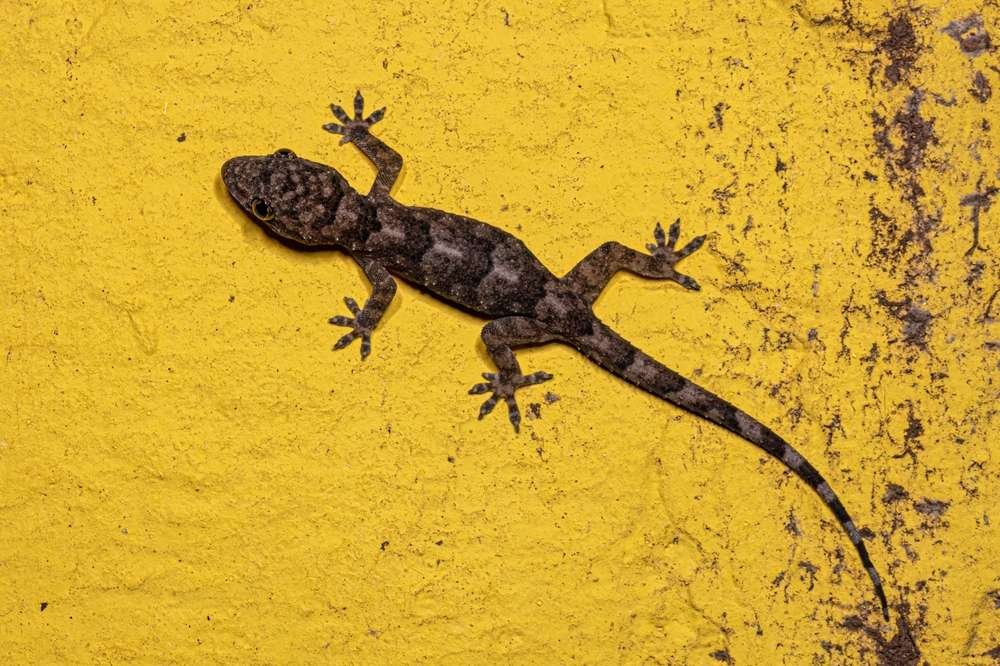Tropical House Gecko
- Hemidactylus mabouia
- IUCN Status: Least Concern
- Threat: harmless
- Venom/Toxin: none
- Trend: stable

- Phylum: Chordata
- Class: Reptilia
- Order: Squamata
- Family: Gekkonidae
- Genus: Hemidactylus
Share:
General Information
The tropical House gecko is a common house gecko that is native to sub-Saharan Africa and was introduced to the Caribbean and other parts of the world.
Fun Facts!
Geckos can slowly change their color from light brown to a darker brown to better match their surroundings..
Description
They are very small in size, have big eyes and see-through brown camouflage skin which they can slowly change depending on their background. They have long tails and small limbs
- Length: 12.7 cm
- Weight: 4-5 g
- Lifespan: 3-5 yrs
Ecology and Behaviour
The tropical House gecko is a solitary, nocturnal and territorial lizard. Being nocturnal, it has very large eyes which are useful in spotting prey in low light conditions. As with many gecko species, it has the ability to vocalize. Its vocalizations range from quiet peeps to rapid short squeaking sounds. They may be heard most easily on a quiet night when they are sitting near an open window.
Diet
The tropical House gecko are carnivorous and insectivorous and have a varied diet which includes centipedes, spiders, scorpions, cockroaches, beetles, moths, flies, mosquitoes and other small pests. They typically hunt by night various flying and crawling insects. They have even learned to wait near outside wall-mounted lighting fixtures so as to catch the insects that are drawn to the light.
Reproduction
Tropical house geckos breed throughout the year and males use chirping sounds and pheromones to attract females. Each female lays only 2 eggs but may lay up to 7 clutches per year. Incubation usually takes between 22-68 days. The young hatch precocial (well developed); they are don’t require parental care and become reproductively mature at the age of 6-12 months.
Conservation
It is categorized by the International Union for Conservation of Nature (IUCN) as a, ” Least Concern “. The Tropical house gecko doesn’t face any major threats at present.
Distribution and Habitat
The tropical House gecko can be found predominantly in urban locations and many houses.
Interaction with humans
Despite being harmless, geckos are seen as creepy by many Zambians because of their see-through skin and how they tend to lurk and stare. In some Caribbean cultures it is considered good luck to have a tropical house gecko residing in one’s home, and certainly they do eat a lot of household insect pests.
No donation to this project yet.
| M | T | W | T | F | S | S |
|---|---|---|---|---|---|---|
| 1 | 2 | 3 | 4 | 5 | 6 | 7 |
| 8 | 9 | 10 | 11 | 12 | 13 | 14 |
| 15 | 16 | 17 | 18 | 19 | 20 | 21 |
| 22 | 23 | 24 | 25 | 26 | 27 | 28 |
| 29 | 30 | 31 | ||||


